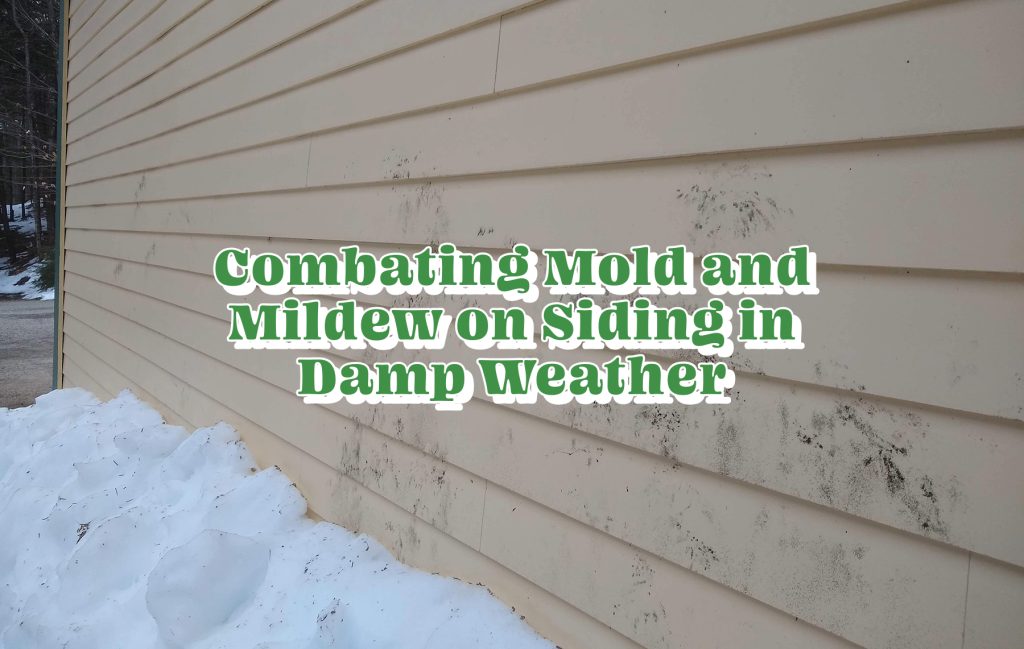Hey folks, Josh here with TruBuilt Construction. If you’ve ever noticed ugly green or black streaks creeping up your siding after a long, wet winter, you’re not alone. Mold and mildew thrive in damp weather, especially when early spring rains keep everything soaked. But don’t worry—I’ve got some solid advice on how to clean it up and keep it from coming back.
Why Does Mold and Mildew Grow on Siding?
Mold and mildew love moisture, and when your siding stays wet for long periods—especially in shady areas with little sun—it creates the perfect breeding ground. Snow, rain, and humidity all contribute to the problem, and certain siding materials (like vinyl and wood) are more prone to mold growth than others.
If left unchecked, mold and mildew don’t just make your home look bad; they can break down siding materials over time and even affect indoor air quality if they spread.
How to Clean Mold and Mildew Off Siding
If your siding is already showing signs of mold or mildew, it’s time to clean it up before it gets worse. Here’s how:
1. Use a Simple Cleaning Solution
- DIY Cleaning Mix: Combine 1 part white vinegar with 3 parts water, or mix a gallon of water with 1/3 cup of laundry detergent.
- Commercial Cleaners: There are plenty of siding cleaners available at hardware stores—just make sure they’re safe for your siding type.
2. Scrub or Spray
- For small areas, use a soft-bristle brush or sponge to scrub away mold.
- For larger areas, a garden sprayer or hose attachment can make the job easier.
- If needed, a pressure washer on a low setting can help, but be careful—too much pressure can damage siding, especially wood or older vinyl.
3. Rinse Thoroughly
After scrubbing, rinse the area well with a garden hose. Leaving cleaner residue can attract more dirt and moisture, making mold growth even worse.
Preventing Mold and Mildew on Siding
Cleaning is only half the battle—keeping mold away for good is the real goal. Here are some long-term solutions:
1. Keep Gutters and Downspouts Clear
Clogged gutters overflow and send water running down your siding, making it more prone to mold. Regularly clean out leaves and debris, and make sure downspouts direct water away from your home.
2. Trim Trees and Bushes
Overgrown landscaping can block sunlight and trap moisture against your home. Trim back trees and bushes to allow for better air circulation and sunlight exposure.
3. Consider Mold-Resistant Coatings
Some exterior paints and sealants contain mold-resistant additives, which can help prevent future growth. If you’re planning to repaint or seal your siding, this could be a great investment.
4. Regularly Inspect and Wash Your Siding
A simple rinse with a garden hose every few months can prevent buildup. For extra protection, use a siding cleaner once or twice a year—spring and fall are great times for maintenance.
5. Address Drainage Issues
If water tends to pool near your foundation or siding, consider regrading your yard or installing drainage solutions to keep moisture away from your home.
Need Help with Your Siding? We’ve Got You Covered!
At TruBuilt Construction, we know that maintaining your home’s exterior is just as important as building it right in the first place. If your siding is looking rough, needs repairs, or if you’re considering an upgrade, give us a call. We’ll make sure your home stays in top shape—no mold or mildew in sight!

